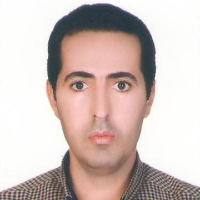Land use change detection using remote sensing and GIS (Case study: Qhaemshahr city)
Author(s):
Abstract:
Background And Objective
One of the main issues in regional planning and development is land use change by human activities. Considering the benefits and potentials of satellite data, we can use remote sensing to extract and find this changes.Method
In this study, land use changes of Qhaemshahr in a 15 years term has been detected. In this study, ETM images of 1999 and OLI images of 2014 of Landsat satellite has been used. After pre-processing via super wised classification, land use map has been extracted.Findings: Finally 5 land use types has been identified in this region. The kappa coefficient and the overall accuracy was 98.4 % and 0.97 % for ETM results and 99.67% and 0.97% for OLI results sequentially. The results showed that agricultural lands, forest, water covered areas has been converted to building zone and garden. The Results showed that 27.26% increase in garden regions, and 45.32 % decrease in agricultural zones during 15 years, also Forest lands and water covered decreased and building zones increased during 15 years.
Discussion and
Conclusion
The results confirm that satellite information for extracting land use maps and detecting land use changes is an effective method for planning the natural resources management.Keywords:
Language:
Persian
Published:
Journal of Environmental Sciences and Technology, Volume:19 Issue: 3, 2017
Pages:
143 to 157
https://www.magiran.com/p1758050
سامانه نویسندگان
مقالات دیگری از این نویسنده (گان)
-
Ecological and Phytosociological Characteristics of Daffodil (Narcissus tazetta L.) in Natural Habitats of Behbahan
Javad Pourrezaei*, Hamideh Urani, Shahram Yusefi Khanghah
Journal of Rangeland, -
The comparison of Artificial Neural Network to and maximum likelihood algorithms for forest changes detection
Parvin Bagherifar *, Reza Basiri, Shahram Yosefi Khaneghah, Hamidreza Pourkhabbaz
Journal of Environmental Sciences and Technology,


